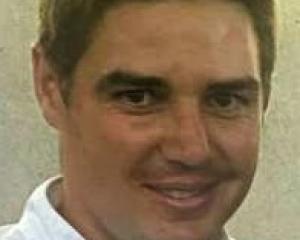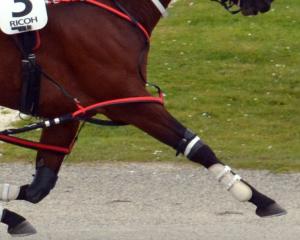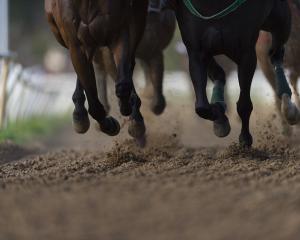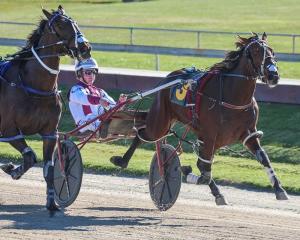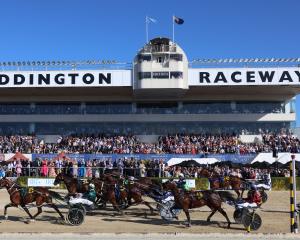
Travellers taking Three Mile Hill between Mosgiel and Dunedin may be unaware that just metres off the main drag there is a hospital that tends to the needs of some of the South's fastest star athletes.
There are no Highlanders or Steel players there, just some really fast track runners.
They are faster than Usain Bolt, yet their lower limbs are barely bigger than his - and those legs have to carry their hulking frames.
Because of that they need running repairs from time to time.
They are the racehorses of Otago and beyond.
Dr Peter Gillespie and his colleagues at Otago Equine Hospital, at Invermay, are charged with tending to their injuries.
Joint problems, repaired at the clinic through arthroscopic surgery, are among the most common ailments. They generally fall into two groups.
Some horses, usually older ones, have wear and tear issues from the rigours of racing and training. Others, usually younger, have issues in their joints that develop as they grow.
Hocks and stifles, in a horse's rear legs, are the most common joints which require surgery.
Just like a star rugby player, the affected horses go under the knife so they can return to training in as-new condition.
The need for surgery is just part of life for the modern racehorse.
The pounding of hooves on a track and in training takes a toll on the horse's body.
Such is the value of the horses the procedures are generally well worth the expense and time involved. For some, it is a relatively small investment that can extend their careers and enable them to hold their rich values. In many cases, that can add thousands of dollars to their owners' bank accounts.
Developmental joint problems that evolve naturally in growing horses are largely avoidable if the horse has been raised in optimal conditions. Avoiding under or over-feeding, and ensuring a horse can get paddock exercise are important in young, growing animals. Horses need a good feeding and animal health programme to grow well, but even those in the best of conditions can develop problems.
The wear and tear injuries they develop from racing and training are much easier to understand. The physics involved in 500kg-plus animals running at high speed on legs that defy the size of their frames means injury is inevitable to some extent.
Properly managed and cambered racing and training tracks are essential in minimising the chance of injury, Gillespie says.
"If you accelerates a mass, then the force on it is exponentially greater.
"The gallopers have their whole body mass supported on one leg during one particular phase of each stride and it is the size of a human leg.
"As soon as you put speed in to the equation the margin for error is minimal.
"If you have a bad track - a track that is uneven, a racing surface that doesn't hold or doesn't have good camber around the bends - then you exponentially increase the risks of injury.
"The one thing that is important about a racing surface is you have got to have a giving surface, but underneath you have to have a firm base. The top first bit will take the the impact, but once the limb is locked and loaded and the body weight is about to pass over the limb, that hoof has to be locked in support."
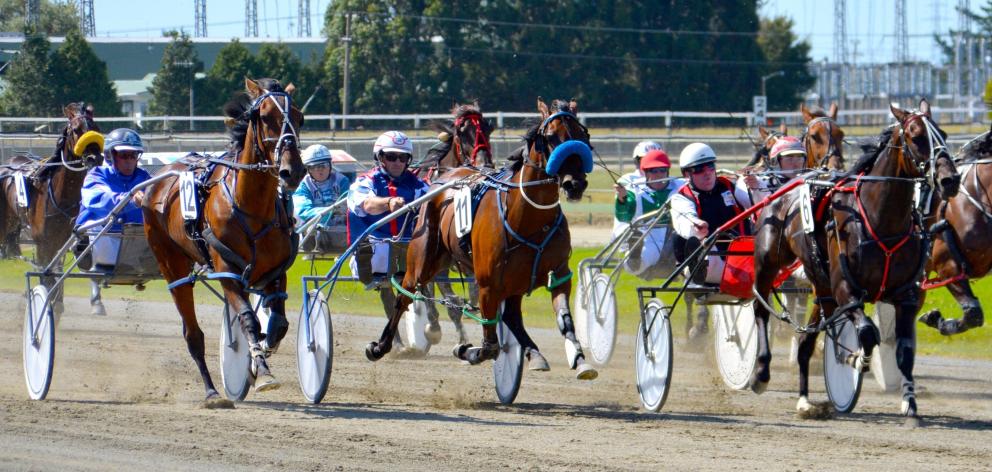
Good training techniques that increase a horse's workload over time are important in conditioning the horse's legs to handle carrying their weight to prevent injury.
"If you incrementally load a leg during training, you are not only building fitness, you are conditioning that bone and that tendon to handle that load," Gillespie says
The similarities between the surgery for a human athlete and an equine athlete are seemingly endless. They take place in effectively the same place and with some of the same equipment.
The Otago Equine Hospital is set up with a theatre for sterile surgery, with all the facilities a theatre for people has. Some of the machines are even made for people and have been adapted to use on horses.
"We have a human anesthetic machine that is adapted for horses.
"It has the same anaesthetic agent that you use. It's just delivered at higher flow rates, and the tubes and everything just bigger," Gillespie says.
There is a very good reason for the use of equipment designed for humans being used in veterinary surgeries. Veterinary hospitals are completely privately funded, so the purchase, maintenance and licensing of the extensive amount of equipment they require is worn completely by each practice.
Picking up human medical equipment that hits the market sometimes because it is end-of-line makes good business sense, Gillespie says.
But there is a strikingly obvious difference once inside a horse hospital. Everything in the theatre is bigger - much bigger - it needs to be.
Dealing with 500-600kg animals in an operating theatre is no easy feat. But the hospital has procedures and equipment to make it a safe and workable process.
"First of all you have got to have a fairly good restraining system," Gillespie says.
The hospital has that with a padded crush and tie-up areas with rubber floors, and a padded recovery area.
Once the horses are anaesthetised, moving them around for surgery is a tricky yet manageable process.
"Modern-day drugs are a lot more predictable, so when you give a certain dose the response is much more predictable than was the case 30 years ago. You generally know the effect you are going to get," Gillespie says.
"In the old days when I first started it was a lot more unpredictable.
"Once they are sedated, it just comes down to their safety and having the ability to move them around."
A winch lifts the horse on to the operating table and helps hold it in position for some procedures.
Dr Guy Alexander, a specialist equine surgeon, travels from Christchurch for the operations.
The old days Gillespie speaks of were a vastly different scene to the clean and safe surrounds of his hospital.
Then, the vet would set up his operating theatre wherever he had to.
"I used to do these things in the paddock - but this is so much better. You don't have to put things off, there is no wind, no dust."
The modern operating theatre he uses now is one factor in why the procedures are so successful.
Each type of operation has a different rate of success, depending on the extent of each injury, but those rates are generally high for the procedures undertaken.
The surgeries need to be effective, because the horses are not going back to a sedentary lifestyle as a pet or hobby riding horse.
Former Waikouaiti pacer Break Dance is one example of a racehorse whose surgery has been hugely successful.
The horse underwent arthroscopic knee surgery at the Otago Equine Hospital and produced incredibly consistent form when he returned to the track.
Fellow Otago mare Princess Brook is the latest quality horse to get running repairs. She has just had arthroscopic surgery on a pedal bone.
Horses with injuries for which there is a poor prognosis for a return to athletic function are generally not operated on. Instead they are rested and a home found for them away from the racetrack, Gillespie says
Thankfully for the majority owners of southern racehorse owners, Otago Equine Hospital is able to patch their pride and joy back together.



